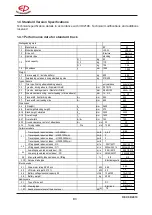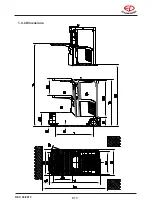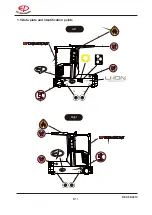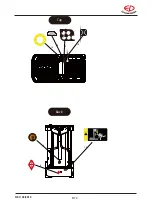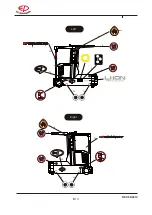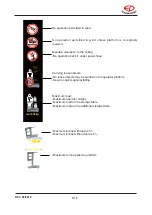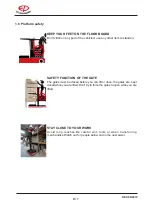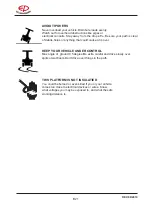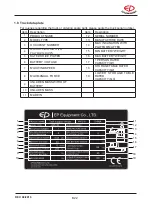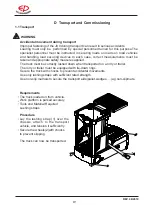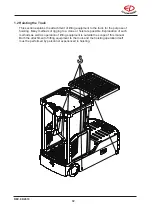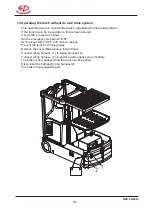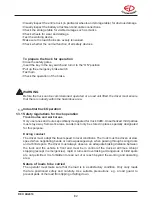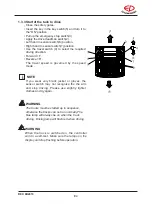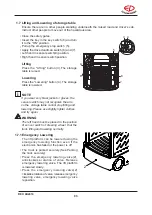
REV. 08/2019
1
C
C Safety
Before Operation
Before using the truck, inspect the work area. It should be neat, well lit, adequately ventilated,
and free from hazardous material. Aisles and roadways should be unobstructed and well ma-
rked. Operators must know the classification for the truck and use the truck only in permissible
areas. Ensure that there are no loose objects on the truck or in the operator compartment, es-
pecially on the floor plate where they could interfere with pedal operation (if equipped) or foot
room. Fire extinguishers and other emergency equipment should be visible and easy to reach.
Wear safety equipment when required. Don’t smoke in “No Smoking” areas, or while charging
batteries or refueling combustion engine trucks. Never operate the truck with greasy hands.
This will make the controls slippery and result in loss of truck control. Any questions or concer-
ns about safety should be brought to the attention of a supervisor. If an accident should occur,
it must be reported immediately.
WARNING
Unauthorized modification to the truck can result in injury or death.
D
o
not remove, disable or modify any safeguards or other safety devices. These include any
alarms, lights, mirrors, and load backrest extensions.
Safety regulations for operating mode Drive
Routes and working areas
Only such lanes and routes that are specially allocated for truck traffic may be used.
Unauthorized third parties must stay away from the working area. Loads may only be stored at
places specially provided for this purpose.
Driving the vehicle
The driver must choose a driving speed suitable for the local conditions. The truck must be
driven at slow speed on negotiating bends or narrow passages, when passing through swing
doors and at blind spots. The driver must always observe an adequate braking distance
between his truck and the vehicle in front and he must be in control of his truck at all times.
Sudden stopping (except in emergencies), rapid U-turns and overtaking at dangerous or blind
spots is not permitted.
Travel visibility
The operator must look in the travel direction and must always have a clear view of the route ahead
If carrying loads that affect visibility, the truck must travel against
the load direction. If this is not possible, a second person must walk alongside the
truck
as a mars-
haller to observe the travel path while maintaining eye contact with the operator. Travel only at
crawl speed and with particular caution. Stop the truck immediately if eye contact is lost.
1.2
1.1
Summary of Contents for JX0-30
Page 1: ...Part No 508000001785 V7 08 2019 Original Instruction JX0 30 JX0 33 Operation Manual...
Page 19: ...REV 08 2019 10 B 1 4 2 Dimensions...
Page 21: ...REV 08 2019 12 B Top Back 2 5 6 9 10 15 16...
Page 22: ...REV 08 2019 13 B Right Left 3 3 4 4 3 7 8 8 3 12 13 12 13 14 14 14 14...
Page 23: ...REV 08 2019 14 B 136 90 110 max336kg 1 2 3 1 2 3 0 5 0 5 11 17 18 19 20 21 22 23...
Page 50: ...REV 08 2019 12 E NOTE...
Page 66: ...REV 08 2019 1 I APPENDIX...

